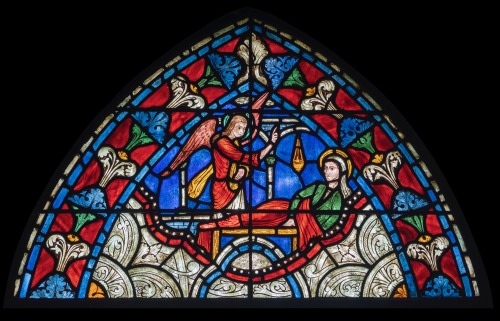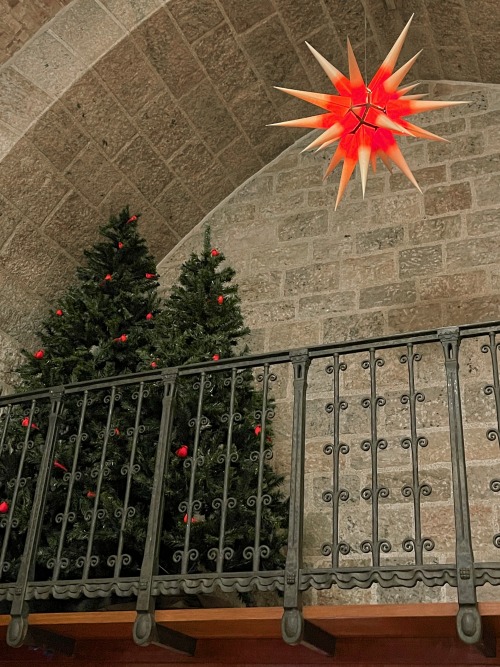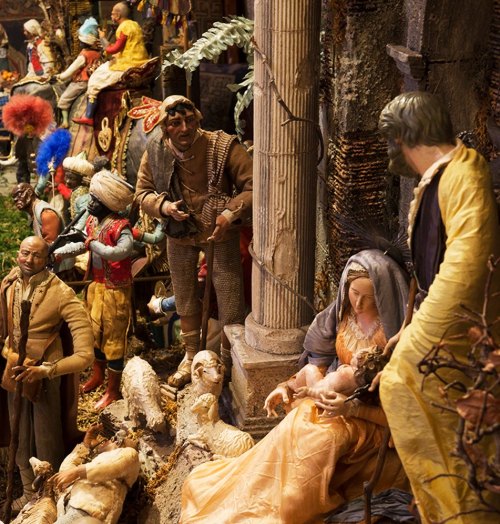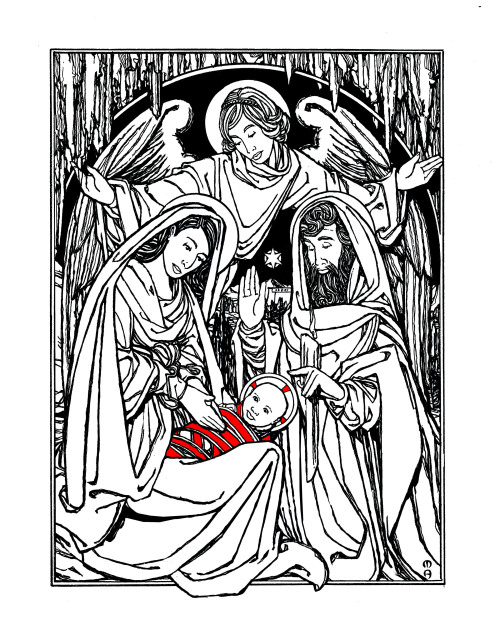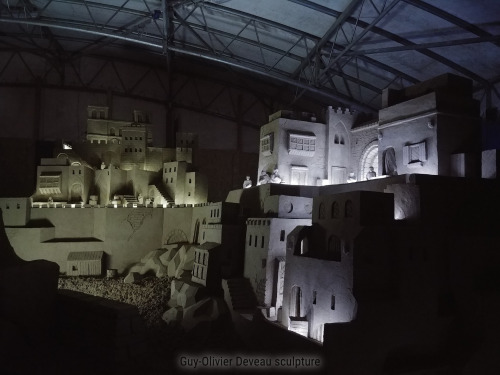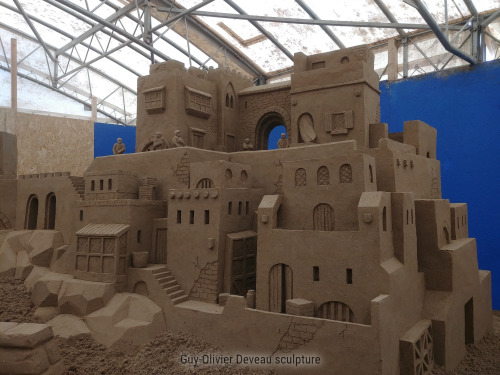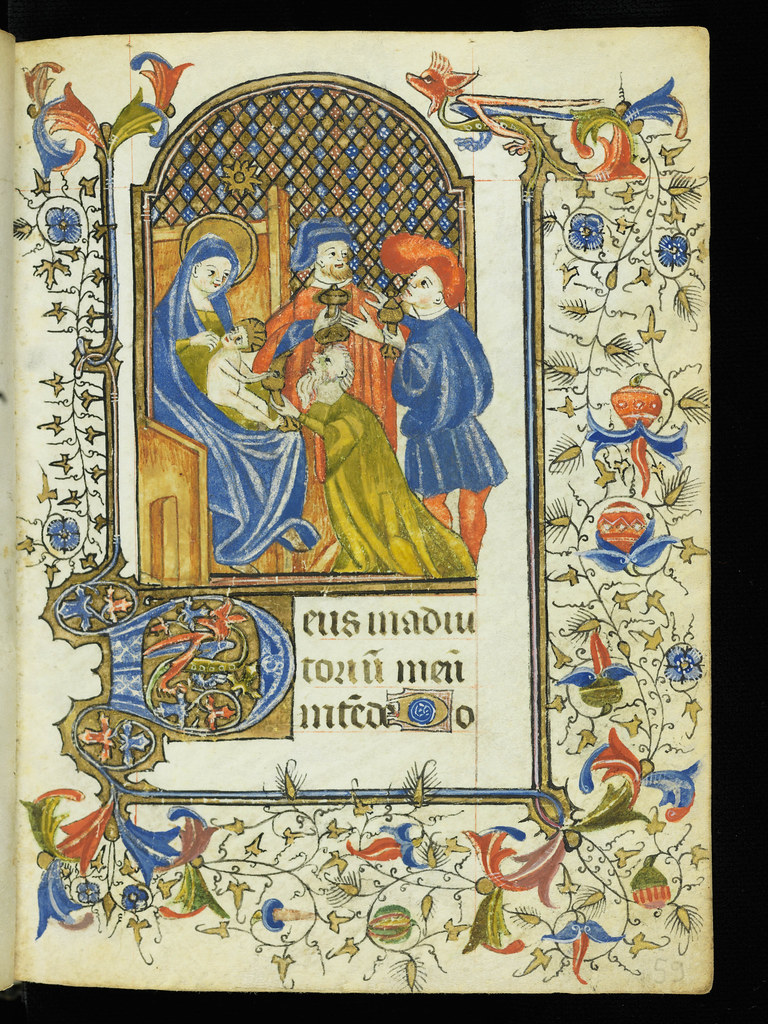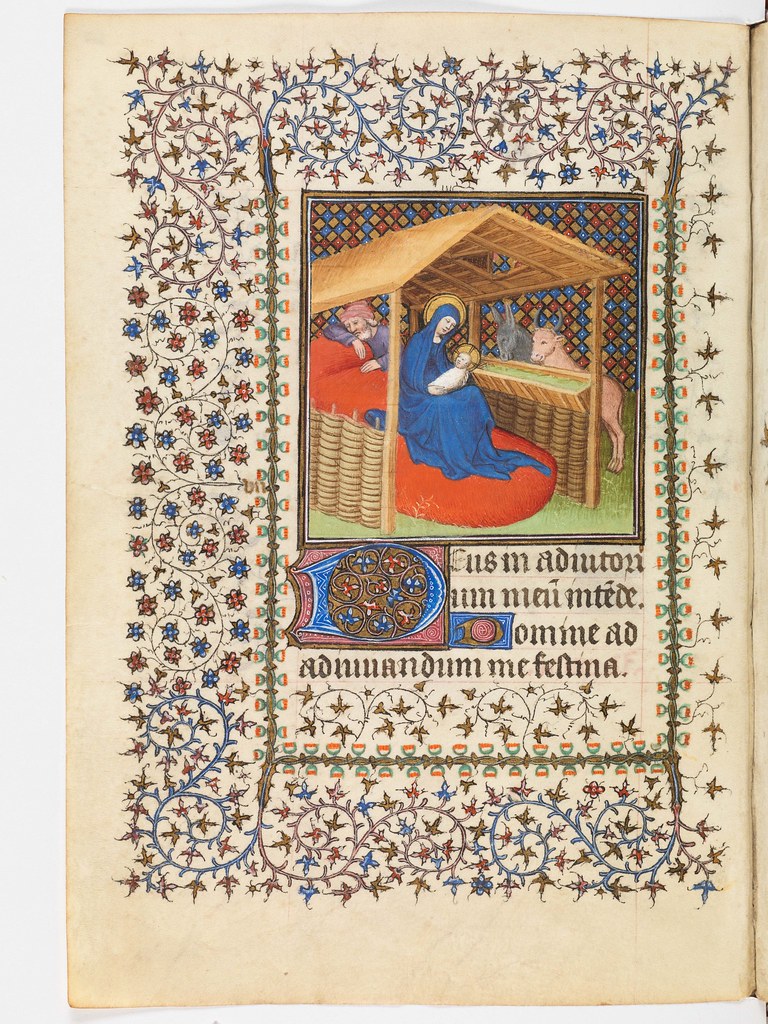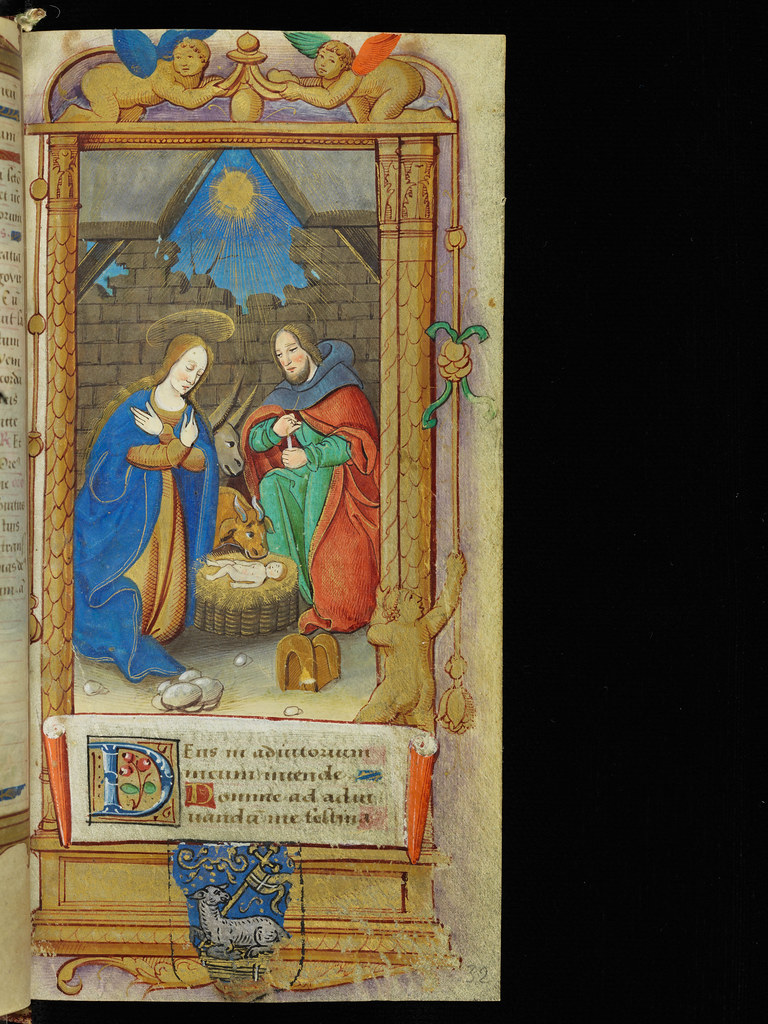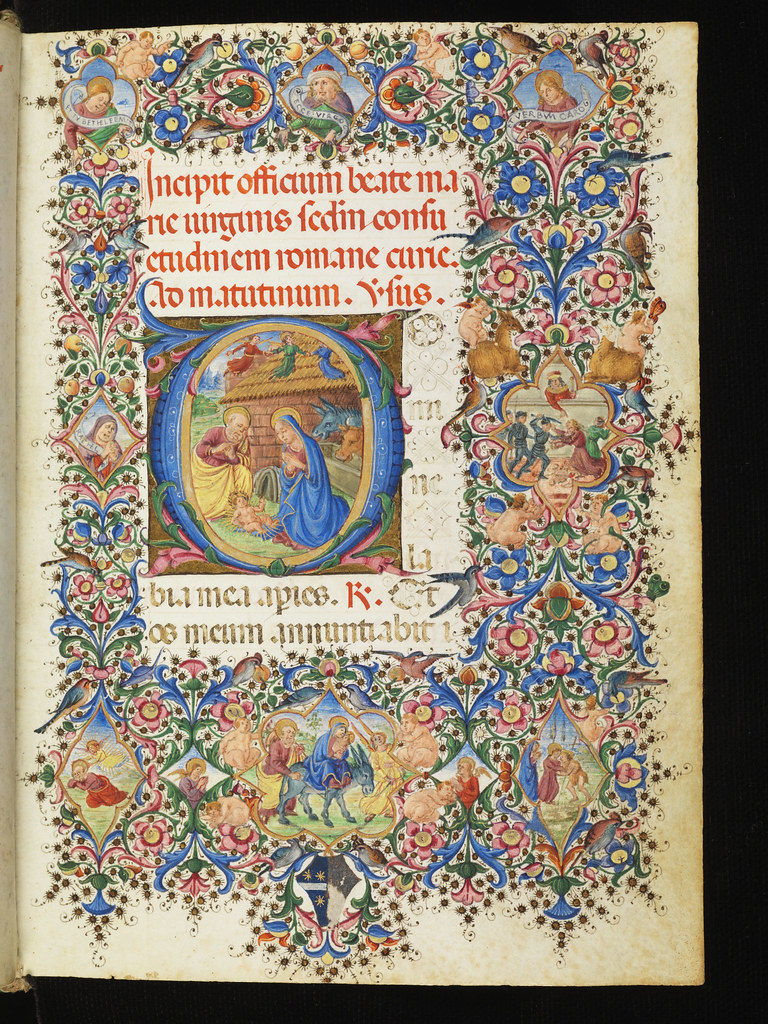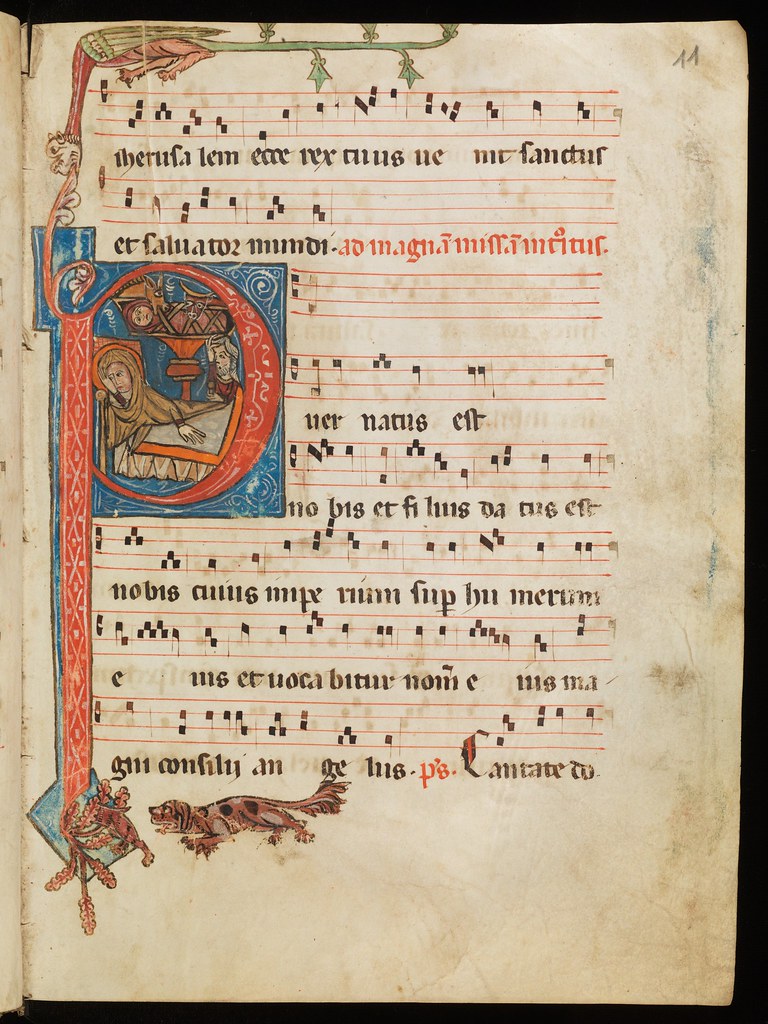#nativity

See what love the Father has bestowed on us that we should be called children of God. ~Christmas Antiphon on the Feast of the Holy Family
Nativity - A Reflection
“Be not afraid,” the angel had said, and he must have known, then, what was to be, for here lies Mary, and she is afraid.
The baby sleeps beside her, wrapped in her ragged veil, and as she watches him, she can see his eyelids flicker. He’s dreaming. His hair is black, like hers, and his nose bumps at the bridge like hers, and she can see his ears stick out a little, like hers. The light from the lamp is warm and dim, and it shines through the shell of his left ear, making the brown skin glow as if lit up from within. His upper lip puckers to a point, hanging over the bottom, and one hand is stuck to his cheek. Every so often, she can hear his breaths. They come in soft puffs.
And oh, she is afraid.
Joseph sleeps beside them. His arms are tightly crossed and his curly hair is crushed into the straw. He snores. Mary doesn’t mind—it’s not nearly as loud as her father’s snoring, which threatens to topple house walls—and mostly she’s relieved he can rest under a roof. It rained the last two nights. It’s raining now, still, and she can see the drops sliding down the mouth of the cave, drumming into the sodden earth. But this stable is dry and warm enough, and she’s grateful. She looks at Joseph, exhausted, mouth hung open and clothes and legs covered in dried mud, and her heart swells. Somewhere in the cave, the donkey clops a hoof against the stone. Her gaze returns to the baby.
He is so small. She can hold his head in a single hand, and it is this that makes her shake. God Almighty, He who formed the earth, who took dust in his hand and made man and woman from nothing, can fit in the palm of her calloused hand and be content. And when she looks at him, she does not see divinity. She sees her family’s stuck out ears, and the bald spots on his scalp. She smells the rain and the manure, and she hears the animals shifting around them, and she is so afraid, she is so afraid. There is no great veil to separate her from this God. This God is wrapped in her stained and crumpled headscarf so the straw doesn’t prickle him in his sleep. He should be in the temple, surrounded by incense and glory, with priests, worthy priests, to attend him, and all he has is her, and this stable, and her trembling hands.
“How can this be?” she had asked the angel, and she asks it again now.
“Be not afraid,” says a still, small voice.
And she knows him. She looks at him, sleeping, fragile, and does not see divinity, but she knows him. This is the God who stood in the silence of Elijah’s cave and breathed. This is He who walked in the first garden, and who spoke to her heart when she was still a child. This is the God of Abraham, the God of Isaac and Jacob. This is the God of her people. It’s enough to stop her heart.
But when he cries, she does not hesitate. She tucks him to her breast and feeds him until he dozes off, and then she lies beside him and watches him sleep. Joseph is still snoring. Out in the field beyond, she can hear the distant voices of shepherds. In the street, a Roman soldier swears as his horse skitters in the mud.
This God is not distant, nor hidden behind splendour. She brushes his soft cheek with her pinky and marvels at the way he turns unconsciously towards it. What but love could compel him to leave his glory? She wonders at it. Here lies the cry of a thousand hearts, cradled in the crook of her arm like any other child. How long, O Lord, has her heart ached for this moment? How many generations of her ancestors have passed, begging on their knees for him to come? And here he is, come, dressed in goose-pimpled skin and fuzzy hair and stuck out ears, and she could laugh at the absurdity if it did not also make her tremble. At last, at last,God is come to creation.
“Be not afraid,” says the still, small voice. And she kisses his head and goes to sleep.
ADVENT CALENDAR DAY 5
Page from a 15th-century Book of Hours, likely made in Northeast France. Glencairn Museum, Bryn Athyn, PA, 07.MS.639.
This scene of the Wise Men presenting their gifts to the Christ Child is from a page in a 15th-century Flemish medieval prayer book known as the Book of Hours. These personal prayer books contained devotions appropriate for the eight canonical hours of the day, as well as other prayers and texts. According to the Gospel of Matthew, “And when they had come into the house, they saw the young Child with Mary His mother, and fell down and worshiped Him. And when they had opened their treasures, they presented gifts to Him: gold, frankincense, and myrrh” (2:11).
Here the gifts of the Wise Men take the form of three golden chalices. Both the Christ Child, who sits on Mary’s lap, and Mary herself, have haloes, but the infant Christ’s halo incorporates the sign of the cross. The clothing of the Wise Men suggests that they have come from three different of countries, while their hair and beards suggest three different ages: youth, adult, and old age. In the left-hand border of the page, two hounds are depicted chasing a white rabbit. Below the main scene is a peacock.
Every day, from December 1 through December 25, a new work of Nativity art from the Glencairn Museum collection will appear on the home page of our Advent calendar (Follow the Star: A 2021 Advent Calendar). To receive these in your newsfeed, follow our social media (Facebook, Instagram, Twitter, Tumblr).
Post link
ADVENT CALENDAR DAY 4
Stained-glass panel by Winfred S. Hyatt and Lawrence Saint from the Christmas window in Glencairn’s Chapel. The window was made from 1928 to 1956. Glencairn Museum, Bryn Athyn, PA.
This stained-glass panel, made in the Bryn Athyn glassworks, depicts the visit of the Wise Men (sometimes called Magi) to the infant Jesus, with the Star of Bethlehem shining above. According to the Gospel of Matthew, “When they saw the star, they rejoiced exceedingly with great joy; and going into the house they saw the child with Mary his mother, and they fell down and worshiped him. Then, opening their treasures, they offered him gifts, gold and frankincense and myrrh” (2:9–12). This scene is in the Christmas window on the south wall of Glencairn’s Chapel.
The meaning of the term Magi (in Greek magoi) in the context of Matthew’s narrative has been a topic of discussion since the early days of the Christian Church. They have been variously described as “sages,” “diviners,” “astrologers,” or “priests.” As early as the third century, however, some interpreters of the Bible began to identify the Wise Men as kings, in connection with a prophesy found in the Book of Psalms in the Hebrew Bible: “May the kings of Tarshish and of the isles render him tribute, may the kings of Sheba and Seba bring gifts!” (Psalm 72:10). By the time of the Middle Ages, the “three kings” were being depicted in art with crowns and elaborate garments.
Every day, from December 1 through December 25, a new work of Nativity art from the Glencairn Museum collection will appear on the home page of our Advent calendar (Follow the Star: A 2021 Advent Calendar). To receive these in your newsfeed, follow our social media (Facebook, Instagram, Twitter, Tumblr).
Post link
ADVENT CALENDAR DAY 3
Stone with polychromy, made in France during the late 15th-century. Glencairn Museum, Bryn Athyn, PA, 09.SP.83.
According to the Gospel of Luke (1:39–56), after the angel Gabriel told Mary that she would give birth to Jesus, the Son of God, she traveled to visit her cousin Elizabeth. This event is commonly called the Visitation. In this 15th-century sculpture group from France, Mary (left), who is pregnant with Jesus, holds a rosary, a set of prayer beads often seen in medieval art. Elizabeth, who is pregnant with John the Baptist, touches her cousin’s womb. According to Luke, when Elizabeth heard the greeting of Mary she was filled with the Holy Spirit, and proclaimed, “Blessed are you among women, and blessed is the fruit of your womb!” (1:42). This sculptural group may have been made for a private chapel dedicated to either Saint Elizabeth or Saint John the Baptist.
Every day, from December 1 through December 25, a new work of Nativity art from the Glencairn Museum collection will appear on our website (Follow the Star: A 2021 Advent Calendar. To receive these in your newsfeed, follow the Museum’s social media (Facebook, Instagram, Twitter, Tumblr).
Post link
ADVENT CALENDAR DAY TWO
Stained-glass panel by Winfred S. Hyatt from the Christmas window in Glencairn’s Chapel in Bryn Athyn, PA. The window was made by Lawrence Saint and Winfred Hyatt from 1928 to 1956. Glencairn Museum, Bryn Athyn, PA.
This stained-glass panel, made in the Bryn Athyn glassworks, depicts the moment when the angel Gabriel announces to Mary, who is resting on a bed indoors, that she has been chosen to be the mother of Jesus Christ. According to the Gospel of Luke, the angel said, “Behold, you will conceive in your womb and bring forth a Son, and shall call His name Jesus” (1:31). The scene is at the top of the Christmas window on the south wall of Glencairn’s Chapel. While the lower scenes in this window were copied from the original 13th-century church of Sainte-Radegonde outside the city of Poitiers, France, this Annunciation seems to have been designed by Bryn Athyn artist Winfred S. Hyatt. (An Annunciation scene has not survived from the window at Sainte-Radegonde.)
Every day, from December 1 through December 25, a new work of Nativity art from the Glencairn Museum collection will appear on our website (Follow the Star: A 2021 Advent Calendar). To receive these in your newsfeed, follow the Museum’s social media (Facebook, Instagram, Twitter, Tumblr).
Post link
ADVENT CALENDAR DAY ONE
Fresco by an unknown artist from the Clarissan monastery of Santa Maria inter Angelos, near Spoleto, Italy (c. 1300). Glencairn Museum, Bryn Athyn, PA, 08.FS.07.
The story of the Annunciation to Mary comes from the Gospel of Luke (1:26–38), in which the angel Gabriel appears to Mary and informs her that she will give birth to Jesus, the Son of God. This large, 13th-century Italian fresco in Glencairn’s Great Hall depicts the moment when Gabriel delivers this astonishing news. The angel says to her, “Do not be afraid, Mary, for you have found favor with God. And behold, you will conceive in your womb and bring forth a Son, and shall call His name Jesus.” (Luke 1:30–31). Gabriel, on the right with wings and a halo, walks toward Mary with his hands in a gesture of blessing. Mary, also wearing a halo, inclines her head, which is covered with a cloak, to Gabriel.
Every day, from December 1 through December 25, a new work of Nativity art from the Glencairn Museum collection will appear on our website (Follow the Star: A 2021 Advent Calendar). To receive these in your newsfeed, follow the Museum’s social media (Facebook, Instagram, Twitter, Tumblr).
Post link
According to tradition, a Moravian Star should be displayed beginning on the first Sunday in Advent (the fourth Sunday before Christmas) until Epiphany (January 6). The Herrnhut Star Company in Herrnhut, East Saxony, Germany, has been producing Moravian Stars for over 160 years. The star on exhibit in Glencairn’s Upper Hall was originally given as a gift to Oskar Boehm by his sister Erna Pfueller (née Boehm). Oskar, his wife Anna, and their children had immigrated from Germany’s Erzgebirge region to the United States in 1928. Edna remained in Germany, and following World War II the region where she lived became part of the German Democratic Republic (East Germany). In the 1950s Erna mailed the star from Germany to Oskar’s family as a gift. Oskar worked as a sexton for St. James Methodist Church on Tabor Road in Philadelphia, and for many years it was displayed in that church at Christmastime. (Gift of Helmut and Elfriede Boehm)
Check out this year’s “Christmas at Glencairn” events here: https://bit.ly/ChristmasAtGlencairn
Post link
The 100+ figures in this large 19th- and 20th-century Presepio were collected in Italy over a period of more than thirty years by the late Elizabeth Anne Evans of Bucks County. A Presepio, which has been called “the translation of the Bible into Neapolitan dialect,” represents daily life in 18th-century Naples, a bustling port city. The miracle of the Nativity is depicted as taking place amid crumbling Roman ruins, signifying the end of the old Roman world and the dawn of Christianity. (Suggested donation to Glencairn’s World Nativities” exhibition is $5.) https://bit.ly/ChristmasAtGlencairn
Post link
R. Gloria Patri et Filio et Spiritui Sancto, sicut erat in principio, et nunc, et semper, et in saecula saeculorum. Amen.
The Lord had said to Me, “You are My Son, this day I have begotten You.” Why have the Gentiles raged, and the people devised vain things?
R. Glory be to the Father and to the Son and to the Holy Ghost, as it was in the beginning, is now, and ever shall be, world without end. Amen
Post link
<b> #woh #oldtimes
<sb> i had a half-cocked idea to make a nativity from action figures.
<sb> i have this guy, he could be baby jesus

<b> heh, you could refer to him as “big” baby jesus for extra trollpower.
<sb> [helium voice] REMEMBER TO WORSHIP ME KIDS OR I’LL BURN YOU IN HELL
Christmas scene in a 15th century manuscript by e-codices
Via Flickr:
Christmas, also known as Nativity, refers to the accounts of the birth of Jesus mainly based on the Gospels of Matthew and Luke. Traditionally, scenes of Nativity, portray the Holy Family in the stable at Bethlehem. The Christ child is represented lying in a manger or upon the straw, whilst Virgin Mary kneels in adoration before Him. In some scenes Virgin Mary is represented lying next to Jesus. Joseph is portrayed standing at one side. The scene also includes depictions of an ox and a donkey, usually in the background, gazing quietly at the scene in front of them. Some Nativity scenes depict one or more angels who proclaim Jesus as the savior for all people, and portrayals of shepherds who come to adore Him. There are also scenes representing the wise men (The Maggi ) who, after following a star, arrive to Bethlehem to bring gifts to Jesus.
Link to the “Christmas scenes”set
Manuscript title: Book of Hours
Origin: Eastern France (?)
Period: 15th century
Image source: Trogen, Kantonsbibliothek Appenzell Ausserrhoden, CM Ms. 5, p. 59r – Book of Hours from (eastern?) France (www.e-codices.unifr.ch/en/cea/0005/59r)
Christmas scene in a 15th century manuscript by e-codices
Via Flickr:
Christmas, also known as Nativity, refers to the accounts of the birth of Jesus mainly based on the Gospels of Matthew and Luke. Traditionally, scenes of Nativity, portray the Holy Family in the stable at Bethlehem. The Christ child is represented lying in a manger or upon the straw, whilst Virgin Mary kneels in adoration before Him. In some scenes Virgin Mary is represented lying next to Jesus. Joseph is portrayed standing at one side. The scene also includes depictions of an ox and a donkey, usually in the background, gazing quietly at the scene in front of them. Some Nativity scenes depict one or more angels who proclaim Jesus as the savior for all people, and portrayals of shepherds who come to adore Him. There are also scenes representing the wise men (The Maggi ) who, after following a star, arrive to Bethlehem to bring gifts to Jesus.
Link to the “Christmas scenes”set
Manuscript title: Book of Hours from Paris
Origin: Paris (France)
Period: 15th century
Image source: Utopia, armarium codicum bibliophilorum, Cod. 108: Book of Hours from Paris (www.e-codices.unifr.ch/en/utp/0108/65v)
Christmas scene in a 16th century manuscript by e-codices
Via Flickr:
Christmas, also known as Nativity, refers to the accounts of the birth of Jesus mainly based on the Gospels of Matthew and Luke. Traditionally, scenes of Nativity, portray the Holy Family in the stable at Bethlehem. The Christ child is represented lying in a manger or upon the straw, whilst Virgin Mary kneels in adoration before Him. In some scenes Virgin Mary is represented lying next to Jesus. Joseph is portrayed standing at one side. The scene also includes depictions of an ox and a donkey, usually in the background, gazing quietly at the scene in front of them. Some Nativity scenes depict one or more angels who proclaim Jesus as the savior for all people, and portrayals of shepherds who come to adore Him. There are also scenes representing the wise men (The Maggi ) who, after following a star, arrive to Bethlehem to bring gifts to Jesus.
Link to the “Christmas scenes”set
Manuscript title: Book of Hours from Paris
Origin: Paris (France)
Period: 16th century
Image source: Trogen, Kantonsbibliothek Appenzell Ausserrhoden, CM Ms. 8, p. 32r – Book of Hours from Paris (www.e-codices.unifr.ch/en/cea/0008/32r)
Christmas scene in a 15th century manuscript by e-codicesChristmas, also known as Nativity, refers to the accounts of the birth of Jesus mainly based on the Gospels of Matthew and Luke. Traditionally, scenes of Nativity, portray the Holy Family in the stable at Bethlehem. The Christ child is represented lying in a manger or upon the straw, whilst Virgin Mary kneels in adoration before Him. In some scenes Virgin Mary is represented lying next to Jesus. Joseph is portrayed standing at one side. The scene also includes depictions of an ox and a donkey, usually in the background, gazing quietly at the scene in front of them. Some Nativity scenes depict one or more angels who proclaim Jesus as the savior for all people, and portrayals of shepherds who come to adore Him. There are also scenes representing the wise men (The Maggi ) who, after following a star, arrive to Bethlehem to bring gifts to Jesus.
Link to the “Christmas scenes”set
Manuscript title: Book of hours
Origin: Florence (Italy)
Period: 15th century
Image source: Genève, Bibliothèque de Genève, Comites Latentes 54: Book of hours (www.e-codices.unifr.ch/en/list/one/bge/cl0054)
Christmas scene in a 14th century manuscript by e-codices
Via Flickr:
Christmas, also known as Nativity, refers to the accounts of the birth of Jesus mainly based on the Gospels of Matthew and Luke. Traditionally, scenes of Nativity, portray the Holy Family in the stable at Bethlehem. The Christ child is represented lying in a manger or upon the straw, whilst Virgin Mary kneels in adoration before Him. In some scenes Virgin Mary is represented lying next to Jesus. Joseph is portrayed standing at one side. The scene also includes depictions of an ox and a donkey, usually in the background, gazing quietly at the scene in front of them. Some Nativity scenes depict one or more angels who proclaim Jesus as the savior for all people, and portrayals of shepherds who come to adore Him. There are also scenes representing the wise men (The Maggi ) who, after following a star, arrive to Bethlehem to bring gifts to Jesus.
Link to the “Christmas scenes”set
Manuscript title:Graduale
Origin: Fribourg (Switzerland)
Period: about 14th century
Image source: Fribourg/Freiburg, Couvent des Cordeliers/Franziskanerkloster, Ms. 9: Graduale (www.e-codices.unifr.ch/en/list/one/fcc/0009)
Christmas scene in a 15th century manuscript by e-codices
Via Flickr:
Christmas, also known as Nativity, refers to the accounts of the birth of Jesus mainly based on the Gospels of Matthew and Luke. Traditionally, scenes of Nativity, portray the Holy Family in the stable at Bethlehem. The Christ child is represented lying in a manger or upon the straw, whilst Virgin Mary kneels in adoration before Him. In some scenes Virgin Mary is represented lying next to Jesus. Joseph is portrayed standing at one side. The scene also includes depictions of an ox and a donkey, usually in the background, gazing quietly at the scene in front of them. Some Nativity scenes depict one or more angels who proclaim Jesus as the savior for all people, and portrayals of shepherds who come to adore Him. There are also scenes representing the wise men (The Maggi ) who, after following a star, arrive to Bethlehem to bring gifts to Jesus. Link to the “Christmas scenes”set
Manuscript title: Antiphonarium lausannense, pars hiemalis (vol. I)
Origin: Bern (Switzerland)
Period: 15th century
Image source: Estavayer-le-Lac , Paroisse catholique Saint-Laurent, Volume I: Antiphonarium lausannense, pars hiemalis (vol. I) (www.e-codices.unifr.ch/en/list/one/psle/0001a).





